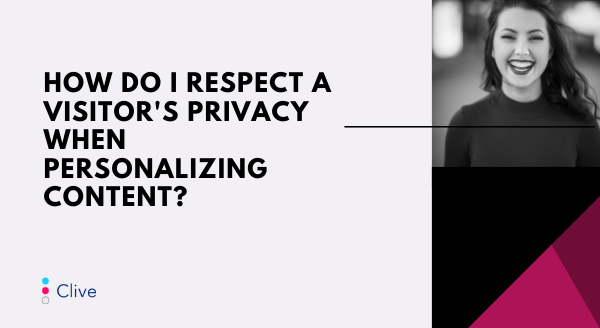By Laura Rives — Nov 7, 2019 11:00 AM

Colleges and universities practicing personalization techniques must be vigilant about maintaining visitor privacy. Abiding by the legal guidelines of The European Union’s General Data Protection Regulation (GDPR) and the new California Consumer Privacy Act of 2018 are paramount, but marketers should also understand that not everyone welcomes personalized marketing messages.
According to a CX Trends report, 75% of consumers find most forms of personalization a least somewhat ‘creepy’. It’s something that higher ed marketers can’t afford to underestimate. Most qualitative feedback from that study noted asking an individual to share personally identifiable information as a ‘creepy’ offense. Requiring a phone number to complete an early-stage transaction, or an app that connects to your location and contacts, are tactics that should be avoided.
Avoid Being Invasive
But the most invasive technique? Sending targeted content based on an individual’s real-time physical location. Conversely, 45% of respondents indicated that the coolest personalization tactic used by brands today is receiving an apology email after a poor in-person or online experience.
In many cases, misgivings in the data-value exchange stem not from using data to deliver personalized experiences, but rather a lack of trust in how companies protect their personal information.
According to a report published by Salesforce, 48% of customers believe companies do a bad job protecting their identifiable information.
Personalization and the Gen Z Audience
Compared to Baby Boomers and Gen Xers, Millennials and Gen Zs have the highest affinity for personalized recommendations. Gen Zs are 25% more likely than other generations to provide personal information to gain a more predictive online experience.
But just because Generation Z is fueled by technology, don’t assume that they are naive or indifferent to how their information is collected and used.
- 66% of Gen Zs said fear of my data being compromised has increased over the past two years.
- 46% said I am uncomfortable with how companies use my personal information.
- 37% said I am confused about how companies use my data.
Eight Steps to Maintain Privacy
Catering to an individual’s desire for a personalized digital experience while respecting their privacy may seem counterintuitive. But there are techniques to solve this challenge:
- Give control over what information is collected
- Be transparent about how information is used
- Show a commitment to protecting information
- Have a strong privacy policy
- Ask for explicit consent to use information
- Don’t share information without permission
- Explain how data translates to a better experience
- Use information to create a distinct experience - make it worth it!
To learn how we can help you on your path to personalization, please reach out to request access to Clive, Hannon Hill’s new engagement platform built to deliver the right message to the right people at the right time. Email support@hannonhill.com to request an account today.
